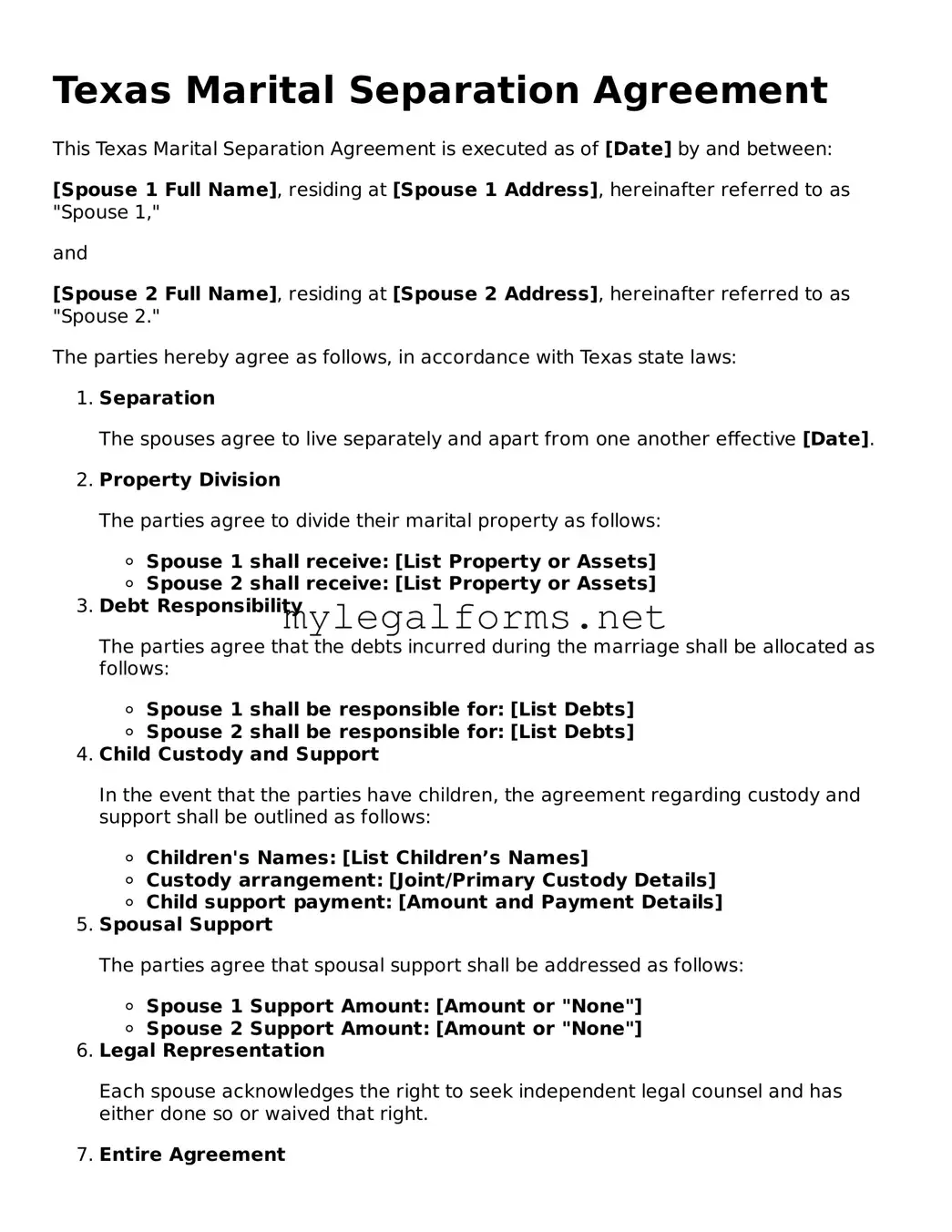Texas Marital Separation Agreement
This Texas Marital Separation Agreement is executed as of [Date] by and between:
[Spouse 1 Full Name], residing at [Spouse 1 Address], hereinafter referred to as "Spouse 1,"
and
[Spouse 2 Full Name], residing at [Spouse 2 Address], hereinafter referred to as "Spouse 2."
The parties hereby agree as follows, in accordance with Texas state laws:
- Separation
The spouses agree to live separately and apart from one another effective [Date].
- Property Division
The parties agree to divide their marital property as follows:
- Spouse 1 shall receive: [List Property or Assets]
- Spouse 2 shall receive: [List Property or Assets]
- Debt Responsibility
The parties agree that the debts incurred during the marriage shall be allocated as follows:
- Spouse 1 shall be responsible for: [List Debts]
- Spouse 2 shall be responsible for: [List Debts]
- Child Custody and Support
In the event that the parties have children, the agreement regarding custody and support shall be outlined as follows:
- Children's Names: [List Children’s Names]
- Custody arrangement: [Joint/Primary Custody Details]
- Child support payment: [Amount and Payment Details]
- Spousal Support
The parties agree that spousal support shall be addressed as follows:
- Spouse 1 Support Amount: [Amount or "None"]
- Spouse 2 Support Amount: [Amount or "None"]
- Legal Representation
Each spouse acknowledges the right to seek independent legal counsel and has either done so or waived that right.
- Entire Agreement
This document contains the entire agreement between the parties. No other statements or promises made by either party shall be binding.
IN WITNESS WHEREOF, the parties have executed this Texas Marital Separation Agreement on the day and year first above written.
______________________________
Spouse 1 Signature
______________________________
Spouse 2 Signature
______________________________
Date
